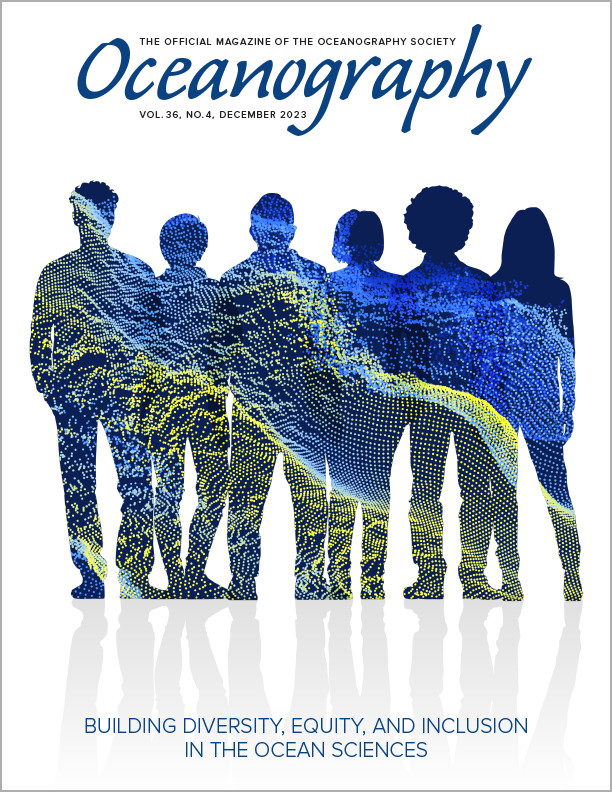Introduction
The underrepresentation of traditionally underserved and historically excluded groups (African Americans, Hispanics, Pacific Islanders, Native Americans, and Alaska Natives) in the STEM disciplines, particularly in the geosciences, has been widely reported (Gilligan, 1996; Johnson and Okoro, 2016). This lack of workforce diversity limits innovation, scientific productivity, the economy, and global competitiveness (Ostergaard et al., 2011; Horta, 2013; Arismendi and Penaluna, 2016). Strategies from a few successful programs could serve as models for recruiting, mentoring, and providing professional development opportunities to underrepresented groups (URMs) in the geosciences (Cuker, 2001; Chigbu et al., 2007; Johnson et al., 2016). In the past 15 years, two National Science Foundation (NSF) Research Experiences for Undergraduates (REU) sites in ocean sciences have been established at Minority Serving Institutions (MSIs), the University of Maryland Eastern Shore (UMES) and California State University–Monterey Bay. Along with a site established at Savannah State University in 1996, they are contributing to the training of a diverse pool of undergraduates in marine science.
Nevertheless, Bernard and Cooperdock (2018) noted a lack of improvement from 1973 to 2016 in the proportion of URMs who received PhDs in the geosciences. To address the major challenge of underrepresented groups of minorities in the geosciences, NOAA formed an educational partnership program with MSIs in 2001 and established four cooperative science centers (CSCs; Morris et al., 2007; Robinson et al., 2007), one of which is the NOAA Living Marine Resources Cooperative Science Center (LMRCSC). The educational goal of these centers is consistent with the development of “a diverse and highly skilled future workforce that pursues careers in disciplines that support NOAA’s mission” (NOAA, 2021). The CSCs were established to help break down barriers encountered by URMs who may be interested in pursuing undergraduate and advanced degrees in NOAA STEM disciplines; these barriers include financial limitations and inadequate mentoring as well as a paucity of marine science programs and limited research infrastructure at MSIs.
Marine ecosystems face many challenges, including unsustainable harvests, habitat losses, harmful algal blooms, and pollution. Additionally, climate change is affecting marine ecosystems with consequent effects on the distribution, abundance, and productivity of biota as well as the socioeconomic well-being of the communities that depend on marine resources. Meeting the projected demand for seafood will require innovative methods and a trained workforce of marine and fisheries scientists, including those from underrepresented groups. This workforce should help increase fish production by developing sustainable aquaculture and supporting ecosystem-based fisheries management (NMFS, 2008; NASEM, 2011). The LMRCSC is aligned with NOAA Fisheries, whose mission is “stewardship of the nation’s living marine resources and their habitat.”
In this paper, we describe the structure of this unique educational partnership program and its student development strategies. We report on program outcomes, especially their impacts on national statistics regarding URM graduates in marine and fisheries science. Finally, we discuss institutional capacity built at Center MSIs and the challenges in administering and sustaining such a complex educational program. We highlight the need for sustained long-term funding to ensure continued success and share information on the programs offered by the Center.
Center Structure and Management
Institutions with complementary areas of expertise and the ability to leverage resources to effect significant positive impacts on the education of a diverse pool of students were selected for the LMRCSC. At inception, the consortium was created by four HBCUs (University of Maryland Eastern Shore, Hampton University, Savannah State University, and Delaware State University) with long and excellent histories of training undergraduates in marine and environmental science, and two non-MSIs (the University of Maryland Center for Environmental Science and the Rosenstiel School of Marine, Atmospheric, and Earth Science at the University of Miami) with state-of-the-art research infrastructure and reputable graduate programs. Since 2011, the LMRCSC has included a West Coast partner (Oregon State University), also with nationally known programs and capacity in fisheries science and applied economics.
UMES serves as the lead institution and is guided by two management tracks: (1) administrative, which addresses contracts, purchasing, record keeping, travel, and other administrative matters, and (2) programmatic, which guides center research, internal and external communications, and assessment and evaluation of objectives.
Student Recruitment and Financial Support
Recruitment plan. LMRCSC recruitment focuses on undergraduates and graduate students, though K–12 students are also trained by the Center using funds leveraged from various sources. The recruiting strategy includes: (1) displays at professional meetings (e.g., American Fisheries Society, Association for the Sciences of Limnology and Oceanography) and smaller, focused conferences (e.g., the Society for Advancement of Chicanos/Hispanics and Native Americans in Science); (2) online recruiting and virtual events, (3) visits by faculty to Center institutions to give seminars; (4) summer undergraduate internships at Center institutions; (5) formal presentations to interns participating in NOAA summer programs; and (6) LMRCSC Open House events. Recruitment goals are met by marketing such Center features as a close mentoring environment and the excellent research conducted by our faculty and NOAA partners. Students interested in joining the LMRCSC submit their applications through the Center’s online portal, which are then reviewed by Center principal investigators/senior personnel.
Financial support. Selected students receive financial support to cover stipend and tuition amounts. Currently, stipends are $14,000 for undergraduates for both fall and spring semesters, and $30,000/year and $40,000/year for master’s and PhD students, respectively. Additionally, graduate students receive funds for specialized training/workshops ($8,000–$10,000), to attend professional conferences ($4,000), and to cover expenses during internships ($10,000) at NOAA Laboratories. Students can be supported fully for a maximum of four (undergraduates), three (master’s), and five (PhD) years, which enables them to devote their full attention to the completion of their degrees.
Core Competencies and Individual Student Development Plan
LMRCSC-supported students are required to meet core competencies that are measured by participation in professional development and course completion in alignment with the NOAA Education Strategic Plan 2015–2035 (NOAA, 2021), with a “B” or better in the course. To increase retention and degree completion rates for students in marine and fisheries sciences programs, the Center uses a Student Development Plan (SDP) that includes center-wide professional development activities. The plan includes participation in campus-based research at Center institutions, summer internships at NOAA facilities and at Center institutions, coursework, seminars, and workshops. Students are mentored on scientific writing and analytical skills, taught experimental design and communication skills, and coached on professional presentations. The SDP enables students to acquire the technical knowledge and skills required in STEM disciplines, particularly NOAA Fisheries-related areas, and to develop professional and social skills needed to be successful. It is designed to assist student progress from undergraduate through graduate programs and ultimately to the STEM workforce. The SDP is implemented collaboratively with each student’s faculty advisor. In addition, the faculty advisor and student identify activities that are appropriate for the academic level and experience of the student each year, and thus create an Individual Student Development Plan (ISDP). The ISDP is maintained online and enhanced by the iSpring learning management system (LMS), which allows cross-institutional monitoring of the student’s plan, core competencies, and other program requirements. Evaluation of pre-professional core competencies focuses on three broad, but interrelated, components that influence educational success: academic/educational development, professional/career development, and social/personal development.
ISDP Component 1: Enhance Academic/Educational Development of Students
This component helps students acquire the knowledge and technical skills needed to develop NOAA mission-related portfolios, particularly in marine and fisheries sciences.
Core competencies in fisheries science. The Center offers rigorous courses in marine and fisheries science, including those considered essential for training fisheries scientists (NMFS, 2008) on and across center campuses using the Center’s virtual campus. Online course delivery via the Blackboard Course Management System, Adobe Connect, WebEx, or Zoom is facilitated by a signed Articulation agreement among LMRCSC member institutions, making it possible for LMRCSC students to receive credit for instruction offered across the Center.
LMRCSC Fellows Assembly. The LMRCSC organizes an annual five-day workshop (Figure 1) to enable a cohort of students to develop literacy in NOAA-relevant science that complements the core competencies they acquire through coursework. The main goal of the workshop is to foster transdisciplinary training in marine resource science and management (Ciannelli et al., 2014) because LMRCSC graduate students have varying academic backgrounds and enroll in varied degree programs and specializations. A second goal is to increase the “cohort” effect and foster meaningful interaction among LMRCSC students, faculty, and NOAA scientists. Student community building and establishment of a network of scholars within and across Center institutions is essential for engendering social support, a sense of belonging, and emotional well-being that together support student persistence, retention, and a high degree of completion rates (Summers and Hrabowski, 2006; Cuker et al., 2016). Workshop sessions organized and taught by scientists from NOAA LMRCSC and NOAA Laboratories focus on the following areas: climate effects on marine ecosystems, healthy habitats, stock assessment/quantitative ecology, aquaculture/seafood safety, and human dimensions of living resource management (i.e., socioeconomics), along with integration of all the areas. Professional development activities such as grant writing, time and stress management, and professional communication are also offered to students. Since 2022, students have been required to participate in the workshop annually until graduation.
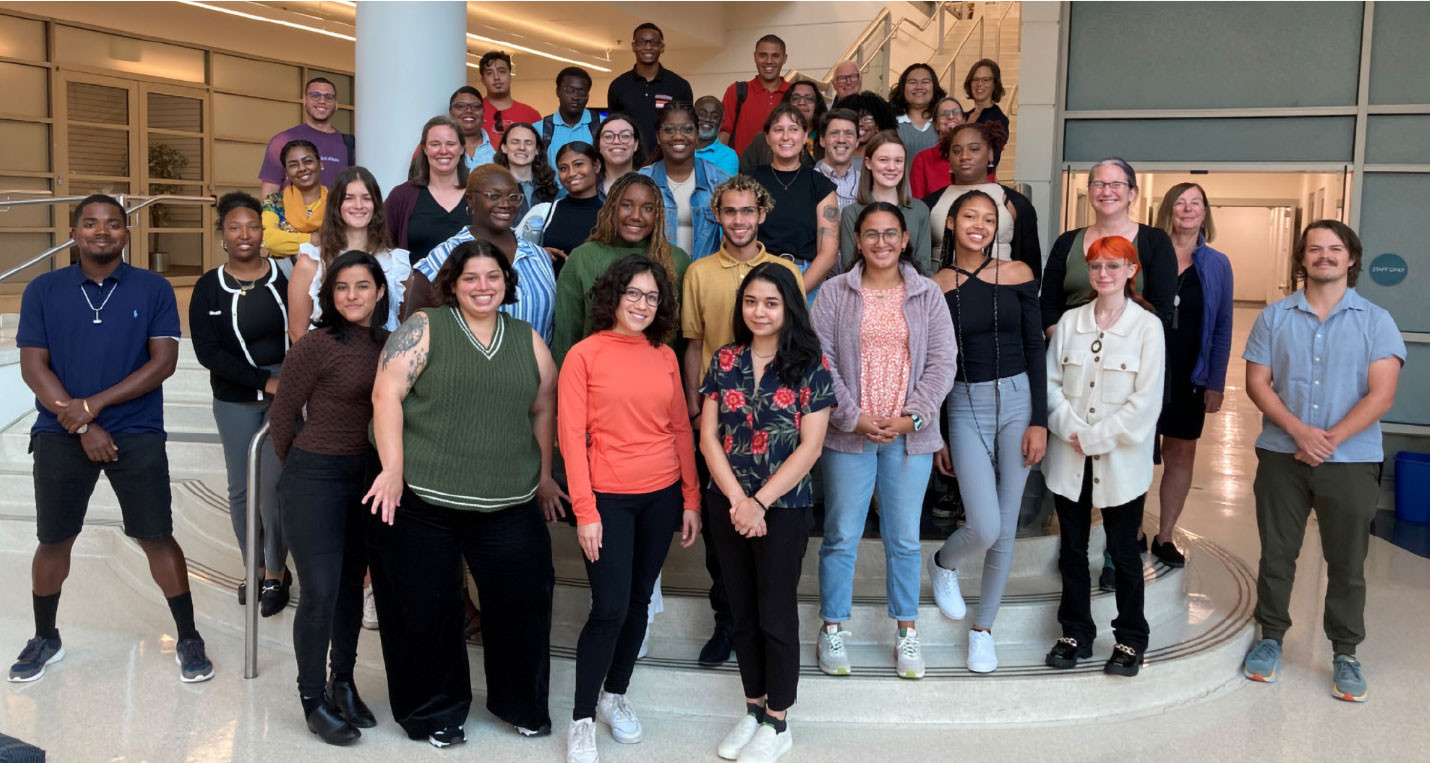
FIGURE 1. Participants gathered for a group picture at the 2023 NOAA Educational Partnership Program/Minority Serving Institution (EPP/MSI) Living Marine Resources Cooperative Science Center (LMRCSC)-II Fellows Assembly at the University of Maryland Center for Environmental Science – Institute of Marine and Environmental Technology. > High res figure
|
Research and mentoring. The LMRCSC builds strong mentoring networks by engaging students in collaborative research projects with faculty members and NOAA scientists and by offering internship experiences that connect students to experts in professional fields. Furthermore, all graduate students work collaboratively with NOAA scientists who serve on their committees, and with whom they can conduct research as part of their NOAA Experiential Research and Training Opportunity (NERTO) experiences (Figure 2). Each graduate student is required to complete a minimum of 12 contiguous weeks of NERTO at a NOAA lab. The LMRCSC provides financial support to cover travel, accommodation, and research supplies during NERTO.
More than 70 NOAA scientists have collaborated with LMRCSC scientists and students in the past 10 years as internship mentors, research collaborators, graduate committee members, and guest lecturers. Graduate students are required to submit proposals developed with their faculty mentors and collaborating NOAA scientists to the LMRCSC. The proposals are reviewed by a Technical Advisory Board (TAB) for scientific merit, congruence with NOAA Fisheries research priorities, collaboration with partner institutions, integration of socioeconomics in the research, and level of student involvement in the proposed research.
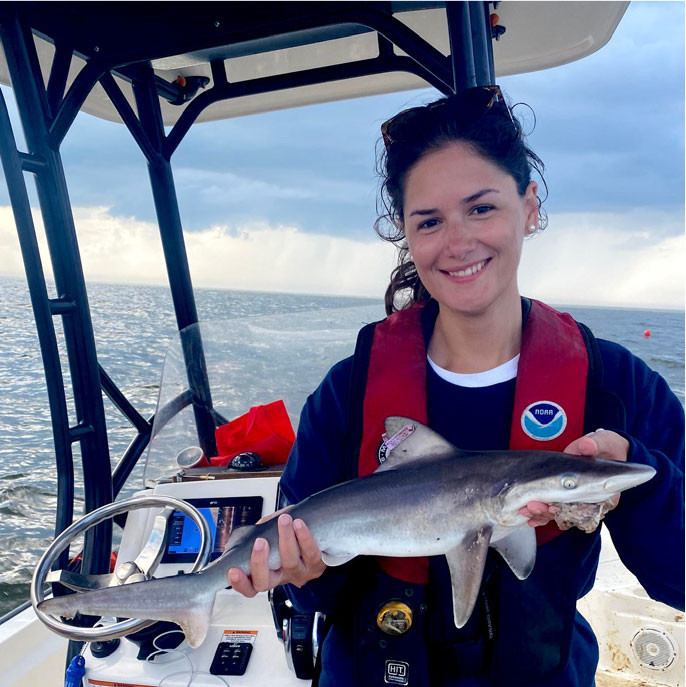
FIGURE 2. NOAA EPP/MSI LMRCSC-II Fellow conducting finfish research. > High res figure
|
ISDP Component 2: Enhance Professional/Career Development of Students
Training to develop skills in mentoring. Center faculty and staff receive training in the practice of mentoring and convey this to Center students. Center graduate students are encouraged to mentor undergraduates and summer interns and integrate them in their research projects. Our students have senior mentors (faculty or staff), junior mentors, and peers who have been in the LMRCSC or other research environments. Additional guidance comes from faculty advisors, our student development workshops, and from network connections that bring in NOAA personnel.
Heightening writing and communication skills. Coursework and LMRCSC-sponsored seminars, symposia, conferences, and other professional development activities at LMRCSC institutions enhance students’ oral and written communication skills. Written communication is enhanced through manuscript preparation for publication in peer-reviewed journals, scientific reports, theses, dissertations, NERTO reports, and research proposals. Graduate students take a scientific communications course or its equivalent.
Developing career opportunities, interviewing, and networking skills. Students are acquainted with career opportunities in marine and fisheries sciences and are coached in interviewing and networking skills during the annual professional development workshop. They learn how to prepare their CVs and what educational and professional development activities they need to engage in to build strong resumes. NOAA mentors help students understand the agency’s work and different career paths.
Participating in summer internships. LMRCSC undergraduates participate in summer internships at NOAA labs or non-LMRCSC institutions and/or conduct research at LMRCSC institutions before graduating. The LMRCSC provides academically enriching workshops and seminars that teach the interns how to identify and successfully compete for scholarships.
Presenting at professional meetings. LMRCSC students each make at least one presentation at a professional conference before completing their degrees. Many of them present at several scientific meetings. Students also present at regional or university-organized conferences and during REU symposia (Figure 3).
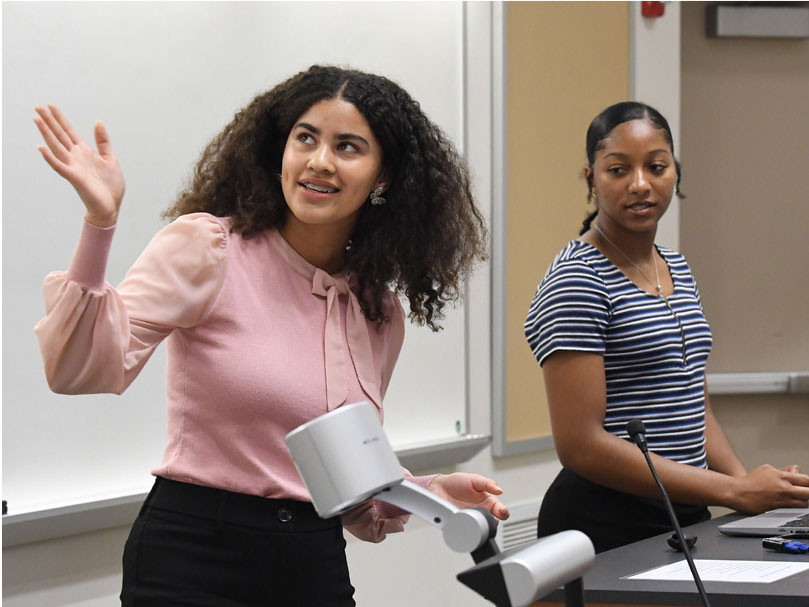
FIGURE 3. NOAA EPP/MSI LMRCSC undergraduates present their research results at a symposium. > High res figure
|
ISDP Component 3: Social/Personal Development of Students
Social and personal skills development is essential for student academic and career success. These “soft skills” are enhanced by training provided during our annual Professional Development Workshop in which students learn about and practice conflict management and learn ways to reduce stress. We also assist students in networking strategies and the creation of effective profiles on established professional social networking sites (e.g., LinkedIn). Furthermore, the LMRCSC creates opportunities for students to network through various means, including Center gatherings during professional meetings, the NOAA Educational Partnership Program/Minority Serving Institution (EPP/MSI) Forum, and the Center’s Annual Fellows Assembly.
Scientific Research Program
Research conducted at the LMRCSC is congruent with the priorities of NOAA Fisheries and supports sustainable harvest and conservation of our nation’s living marine resources (Figure 4). The Center’s research is implemented collaboratively among faculty and students across the partner institutions. This level of collaboration strengthens the research capacity of each institution and makes available a multitude of intellectual and scientific resources that the partner institutions could not offer individually. Research conducted by the LMRCSC is collaborative among partners and NOAA scientists and responsive to the needs of NOAA regarding federally managed species, habitats, and ecosystems. Additionally, it is quantitative, emphasizing skills and tools that will enable students to tackle complex problems.
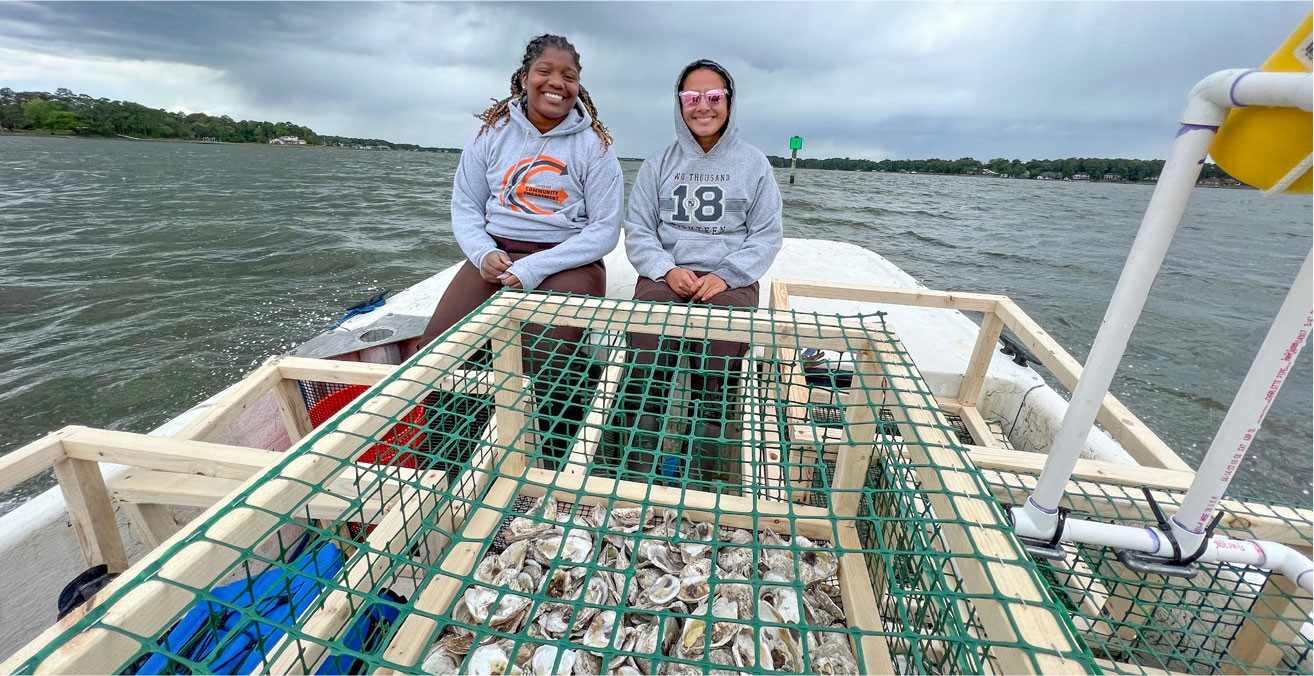
FIGURE 4. NOAA EPP/MSI LMRCSC-II Fellows head out to conduct oyster research. > High res figure
|
Results: Outcomes of the Center
Students Trained and Graduated
From 2001 to 2022, the LMRCSC recruited and trained 1,092 students (516 BS, 241 MS, 89 PhD, and 246 non-degree students, mostly summer interns), and graduated 630 (401 BS/BA, 173 MS/MA, 56 PhD) students, of which ~77% belong to underserved groups. Student retention rate in the LMRCSC program averages ~75%, though it is much higher for MS (89%) and PhD (92%) students. The retention rate is lower for undergraduates, owing to a number of factors, such as change of program, major, or university, or drop in GPA below 3.0, making the student ineligible to receive funding from the Center. The average duration of support of students was 2.2 years (BS), 2.2 years (MS), and 4.3 years (PhD). The percentage of students trained by the LMRCSC that belonged to URM groups was 95% (BS), 70% (MS), and 96% (PhD). Twelve LMRCSC students have received NOAA Sea Grant Knauss Fellowships since 2011, and 67 graduate students have taken part in the NERTO at NOAA Laboratories since 2016.
Impacts of the LMRCSC on Workforce Representation in Marine and Fisheries Science
A comparison of the number of doctoral degree recipients from the Center with the number reported in the US Department of Education Integrated Post-Secondary Education Data System (IPEDS) from 2003 to 2022 indicated that 26% of Black/African Americans who received PhD degrees and 21% of Black/African Americans who received MS degrees in marine science in the United States were financially supported by, and graduated from, LMRCSC institutions. About 8% of Hispanic/Latino PhD graduates were financially supported by the LMRCSC. Overall, ~11% of URMs who received PhD degrees in marine science in the United States during the period received funding from the LMRCSC. It was reported that the number of Black/African Americans who received PhDs in geosciences (including just 58 in ocean science) had not increased significantly from 1973 to 2016 (Bernard and Cooperdock, 2018). Without the 26% contributed by the LMRCSC, the graduation data for African Americans would have been more dismal, assuming LMRCSC graduates who received PhDs in marine science were included in the authors’ data on the number of PhD degree recipients in ocean science/marine science. Of the LMRCSC graduates, 41 work for NOAA or NOAA contractors.
Some Outcomes of Center Activities
Results of surveys conducted by LMRCSC external evaluators show that students benefited from Center activities, especially the Fellows Assembly, NERTO, and the TAB proposal review process (Bishop and Walters, 2023a, 2023b). On a scale of 1 (lowest) to 5 (highest), interns rated their personal and professional benefits from the Fellows Assembly very highly (score of 4 or 5): “Developing relationships with other students” (80%), “Developing relationships with NOAA scientists” (90%), “Obtaining career opportunities and pathways” (90%), “Fostering cooperation and collaboration in research” (80%), and “Enhancing community skills” (90%).
About 88% of students who participated in NERTO expressed that the internship had much influence on their career decisions. Examples of statements made by the students are: “Interning at a NOAA Lab this summer allowed me to experience what it would be like to work at NOAA and has inspired me to possibly work at NOAA when I graduate.” “I learned more in depth how NOAA operates as an organization and the role of science in the government.” “I got a chance to see what NOAA does in person and be a part of that work. I am more energized about NOAA’s mission, and seeing what they do firsthand solidified my wanting to work for NOAA one day.”
LMRCSC students also benefited from the TAB proposal review process, as indicated by the following examples of comments made in response to a question on the primary benefits gained from participating in the TAB process: “The primary benefits obtained from this TAB project are the experience of writing a research proposal and working directly with a NOAA affiliate.” “Networking and geostatistical modeling skills.” “It is contributing to the rest of my dissertation.” “A much better understanding of how fisheries are managed and the data that is needed to produce policies.”
Lessons Learned
The LMRCSC differs in scope and complexity from other aquatic sciences programs that target only K–12 students, undergraduates, and/or graduate students (see review by Cuker, 2007). The Center has had a significant positive impact on the number of students belonging to traditionally underrepresented and historically excluded communities who receive advanced degrees in marine and fisheries science. This is a result of the dedication of key Center personnel and the use of best practices known to increase the recruitment, retention, and graduation of URMs in ocean sciences (e.g., Johnson and Okoro, 2016). Among the lessons learned are:
- Secure sustained funding and enhance collaboration. Sustained funding from NOAA, and collaboration with NOAA scientists in student training and mentoring, have contributed to the Center’s success.
- Conduct center-wide training. We train potential faculty advisors on culturally aware mentoring so that the students get the support they need, even in Predominantly White Institutions (PWIs). The presence of the LMRCSC at PWIs has thus given the PWIs more tools and strategies to succeed in training URMs.
- Create cohort-building activities and support networks. Activities such as the annual Fellows Assembly provide an opportunity for networking and enhance students’ understanding of NOAA’s mission and goals and career opportunities. This helps support Center students, especially those attending PWIs, who may be among only a few URM students in their programs.
- Provide long-term mentoring. Our experience highlights that students, regardless of educational preparation, flourish with mentoring and heavy engagement that is personal and immediate and provides a viable support network.
- Develop center-wide standard operating procedures. In a multi-institutional center with different academic programs and calendars (semesters vs. quarter systems), it is important to develop (1) center-wide mechanisms by which students receive consistent academic, research, and professional mentorship, and (2) standard operating procedures that students can follow to identify NOAA mentors and apply for and participate in internships.
- Gain commitment to a unified set of strategies. Successful collaboration requires firm commitment to a unified set of student-centered administrative principles and a respect for the unique strategies each partner contributes to the Center’s success.
LMRCSC graduates currently occupy positions at NOAA and other agencies, and as professors in marine science programs, where they are helping to mentor and train the next generation of STEM scientists. The LMRCSC will continue to provide a model of collaborative educational partnership that should be replicated elsewhere to enhance diversity in STEM disciplines, particularly the geosciences.
Acknowledgments
Funding was provided by NOAA Educational Partnership Program with Minority Serving Institutions Cooperative Agreement Nos: NA16SEC4810007, NA21SEC4810005. Any opinions, findings, conclusions, or recommendations expressed in this publication are those of the author(s) and do not necessarily reflect the view of the US Department of Commerce, National Oceanic and Atmospheric Administration.

